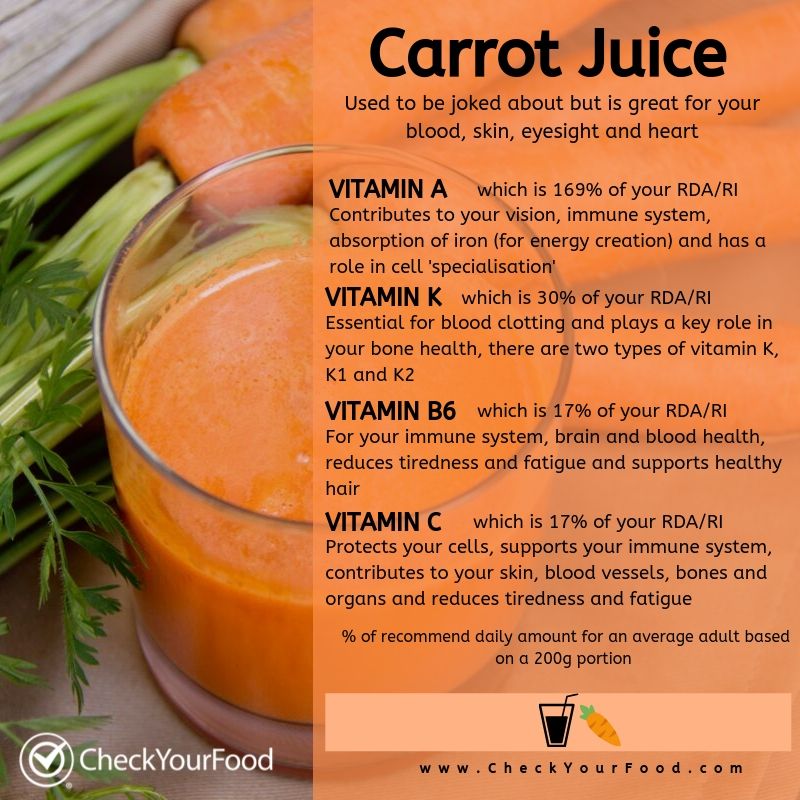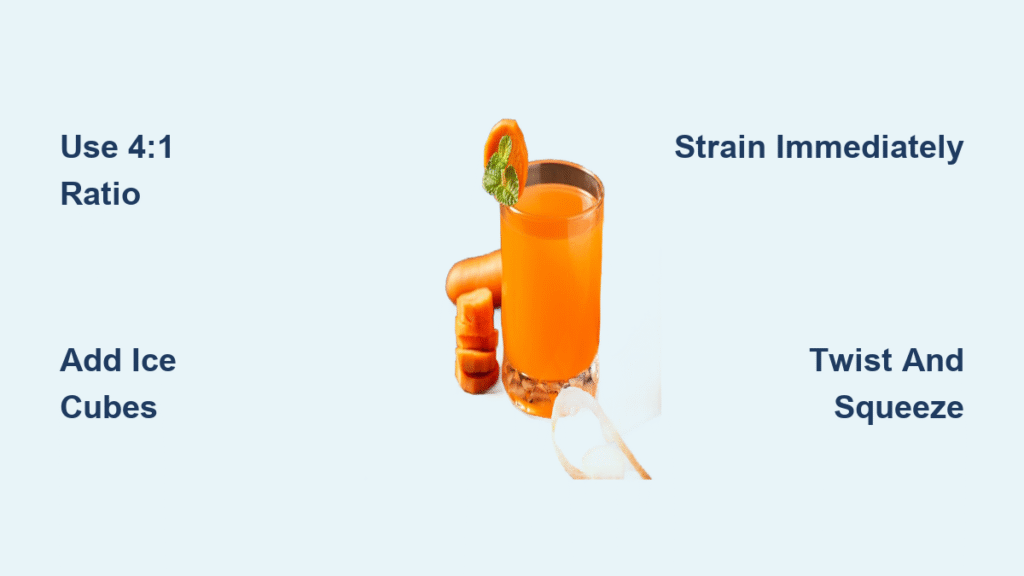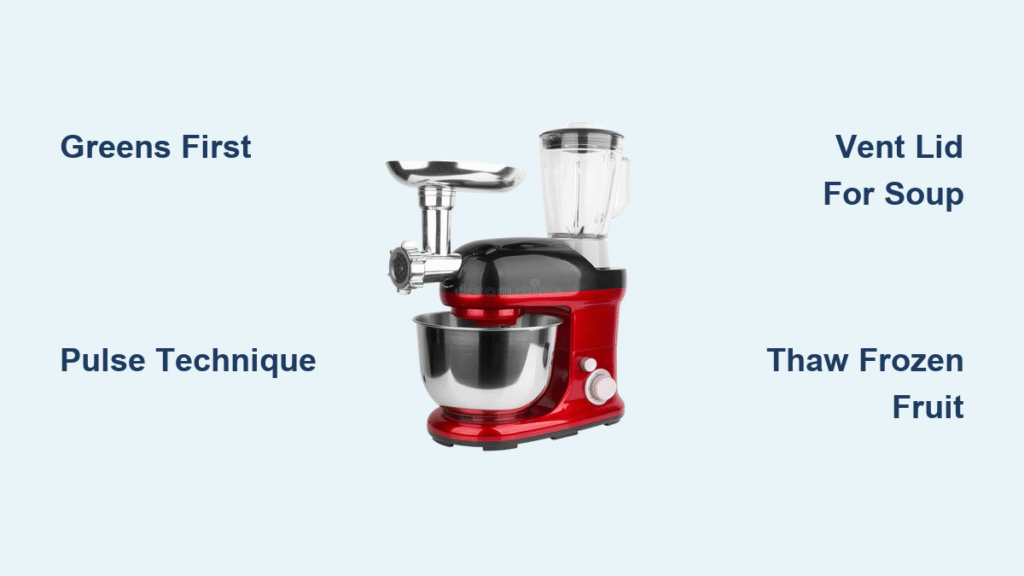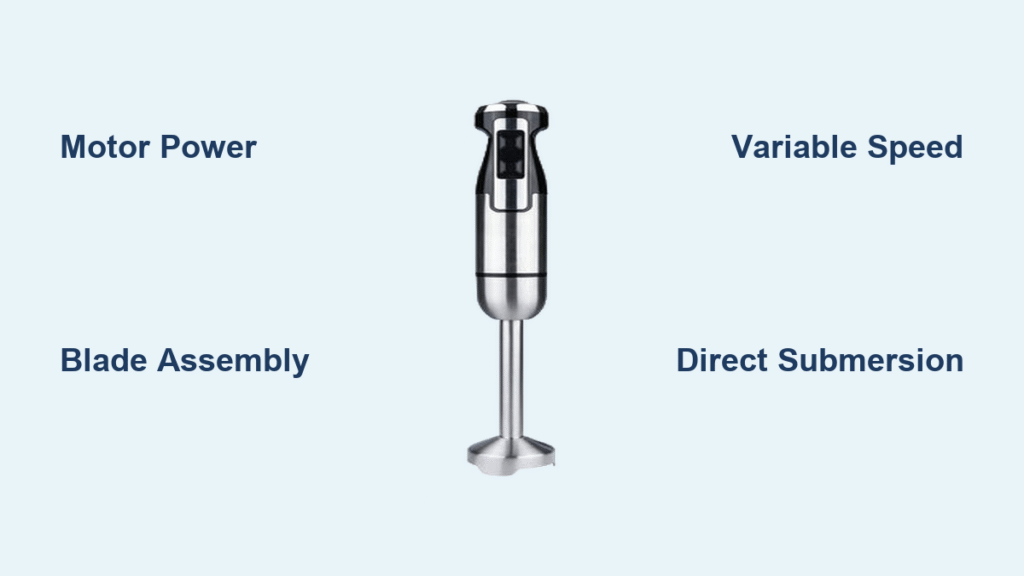Store-bought carrot juice costs triple the price of raw carrots while losing precious nutrients during pasteurization and shelf storage. But here’s the game-changer: you can make vibrant, nutrient-packed carrot juice in under five minutes using just your blender—no expensive juicer required. This method delivers 835% of your daily vitamin A needs in every glass while preserving delicate antioxidants that commercial processing destroys. Below, you’ll discover the exact blender settings, straining hacks, and flavor tricks to transform ordinary carrots into silky, restaurant-quality juice that outshines store versions.
Why Your Blender Struggles with Carrots (and How to Fix It)

Fibrous carrots can stall weak blenders or create frustratingly watery pulp. The solution starts with matching your equipment to the task. A 600+ watt motor (like Vitamix or Ninja models) is essential to pulverize tough cellulose without overheating. If your blender typically struggles with frozen fruit, slice carrots into 1-inch chunks instead of 2-inch pieces and add liquid first to create a vortex that pulls produce downward.
Straining Tools That Actually Catch Pulp (Not Just Fibers)
Your straining method determines whether you get 1 cup or 2 cups of juice from the same carrots. Skip regular colanders—their gaps larger than 1 mm let pulp slip through. Instead:
– Nut-milk bag: Yields 10% more juice with minimal effort (twist tightly to extract every drop)
– Fine-mesh sieve + spoon: Press in circular motions to expose wet spots in the pulp
– Cheesecloth-lined colander: Only use as emergency backup (requires 3-4 layers to prevent leaks)
Scrub, Peel, Chop: The 3-Step Carrot Prep for Maximum Juice
Proper preparation unlocks sweeter, brighter juice while protecting your blender. Start by scrubbing carrots under cold running water with a vegetable brush to remove embedded dirt—skip soaking if using a high-speed blender. Peeling is optional but recommended for non-organic carrots; unpeeled organic varieties yield earthier juice with slightly more fiber.
When to Skip Peeling (and When You Must Peel)
Peel young, tender carrots only if you want brighter color—their thin skins won’t affect flavor. But always peel older carrots with thick, woody skins that impart bitterness. For optimal blending, chop into uniform 1–2 inch chunks that create downward vortex motion. Pro tip: Pre-wash and chop a full bag on Sunday, storing pieces in crisper bags for instant weekday juicing.
The Exact 4:1 Carrot-to-Liquid Ratio That Works Every Time

Most homemade carrot juice fails because of incorrect liquid ratios. Use exactly ¼–½ cup cold liquid per 3 medium carrots (250g). Water works, but orange juice or coconut water adds natural sweetness that masks earthy notes. Crucially, add 4–8 ice cubes—they prevent heat buildup that degrades vitamin C and dulls color. Never exceed ½ cup liquid per batch; excess water dilutes flavor and triples straining time.
Why Ice Cubes Are Non-Negotiable for Nutrient Retention
Heat generated during blending destroys heat-sensitive nutrients within 90 seconds. Ice cubes keep temperatures below 10°C above ambient, preserving vibrant color and 62% of vitamin C. For best results, add ice after carrots but before flavor boosters so they circulate evenly. If your juice runs warm after blending, your motor is overheating—next time, use frozen apple chunks instead of ice.
5 Flavor Combos That Hide Carrot Bitterness (Like Orange-Ginger)
Raw carrots can taste unpleasantly earthy without the right pairings. Add flavor ingredients before blending so they fully integrate:
– Orange-Ginger: 1 cup juice + ½-inch ginger knob (zesty digestive boost)
– Apple-Cinnamon: 1 medium apple + ⅛ tsp cinnamon (kid-friendly sweetness)
– Turmeric Elixir: ¼ tsp turmeric + 2 black pepper cracks (anti-inflammatory punch)
– Lemon-Lime Zing: Juice of ½ lemon + 2 lime wedges (brightens dull batches)
– Cucumber-Mint: ½ cucumber + 5 mint leaves (ultra-hydrating summer refresher)
Sweeteners to Add After Straining (Not Before)
Never add honey or maple syrup before straining—it sticks to pulp and wastes sweetener. Instead, stir in 1 tsp sweetener at a time after straining until balanced. For savory variations, add a pinch of black salt (kala namak) to mimic celery’s umami depth. Remember: young carrots need little sweetening, while older ones may require up to 2 tsp per serving.
Blend 60 Seconds, Strain Right: Your Foolproof Juicing Sequence
Timing is everything for perfect texture. Load ingredients in this order: carrots first, then liquid, ice, and flavor add-ins. Blend on high for exactly 30–60 seconds until completely smooth with no visible fibers. Over-blending heats juice; under-blending leaves pulp chunks. Pause once to scrape sides if needed.
The Twist-and-Squeeze Method for 10% More Juice
Strain immediately while juice is warm for maximum yield. Pour small batches into a nut-milk bag suspended over a bowl. Twist the bag tightly and squeeze in downward motions, repositioning pulp to expose wet spots. When the pulp feels crumbly (not damp), you’ve extracted every possible drop. This technique yields 200–220ml juice from 250g carrots—10% more than spoon-pressing.
Blender Stalling? 4 Fixes for Common Carrot Juice Problems
If your blender stalls mid-cycle, immediately stop and add 1–2 tablespoons more liquid. Pulse 3 times before resuming continuous blending—this prevents motor burnout. For watery juice with weak flavor, you’ve added too much liquid; next time, reduce to ¼ cup per batch and press pulp harder during straining.
How to Rescue Dull-Colored or Bitter Juice

Dull orange juice signals old carrots—always choose young carrots with bright green tops still attached. If juice tastes bitter, blend in ½ apple or 3 orange segments next time to balance earthiness. For immediate rescue, stir in 1 tsp lemon juice to brighten flavors. Never use carrots with black spots or soft ends—they impart off-tastes no add-in can fix.
3 Costly Mistakes That Ruin Your Carrot Juice Yield
The #1 error is adding excess liquid—more than ½ cup per 3 carrots dilutes flavor and creates frustratingly wet pulp that’s hard to strain. Second, skipping ice cubes allows heat to degrade nutrients within 90 seconds of blending. Third, using a weak blender on thick carrot chunks strains motors and yields chunky, uneven juice.
When to Upgrade Your Equipment (Before Motor Burns Out)
If your blender takes over 90 seconds to process carrots, it’s underpowered. Slice carrots into ½-inch pieces and add liquid incrementally to avoid stalls. But if it consistently overheats, consider upgrading to a 1000-watt model. Never force a struggling blender—this risks permanent motor damage that costs more than new juice equipment.
Why Your Carrot Juice Turns Brown (and How to Keep It Fresh 72 Hours)
Fresh juice oxidizes rapidly at room temperature, turning brown within 15 minutes as nutrients degrade. Refrigerate immediately in a glass jar filled to the rim to minimize air exposure. Properly stored, it stays vibrant for 48–72 hours—flavor dulls after 24 hours but remains nutritious. For longer storage, freeze in ice cube trays (thaw for smoothies only; texture separates).
Safety Tips for Pregnant and Immunocompromised Drinkers
Pregnant individuals and those with weakened immune systems should avoid unpasteurized fresh juice due to potential bacterial contamination from raw produce. If consuming, wash carrots with a vinegar solution (1 part vinegar to 3 parts water) and drink within 15 minutes of preparation. Pasteurized store juice remains the safer option for these groups.
Don’t Toss the Pulp: 5 Genius Uses for Carrot Scraps
One batch yields ½ cup of nutrient-rich pulp—perfect for zero-waste cooking. Freeze tablespoon portions in silicone trays to boost smoothie fiber content without altering flavor. In baking, substitute pulp for 50% of shredded carrots in muffins or cakes. For savory uses, simmer pulp 20 minutes in broth for instant carrot stock, or mix with seeds and bake into crackers.
Freeze Pulp for Instant Smoothie Fiber Boosts
Never discard damp pulp—pat dry with paper towels before freezing to prevent ice crystals. Portion into 1-tbsp servings for smoothies: one portion adds 2g fiber per serving with no prep time. For carrot-top pesto, blanch greens first to remove bitterness, then blend with toasted walnuts, garlic, and olive oil.
Scale Up or Down: The Carrot Juice Cheat Sheet for Any Batch
Memorize this 4:1 ratio: 4 parts carrots to 1 part liquid. For single servings (1 cup), use 125g carrots + ¼ cup liquid + 2–3 ice cubes. Double for two servings (2 cups): 250g carrots + ½ cup liquid + 4–6 ice cubes. Quadruple for family batches (1 quart): 500g carrots + 1 cup liquid + 8–10 ice cubes. Always adjust flavor add-ins proportionally—never by fixed amounts.
Mastering how to make carrot juice with a blender boils down to three non-negotiables: correct liquid ratios, immediate straining, and ice-cold processing. Within minutes, you’ll transform humble carrots into a vitamin A powerhouse that costs pennies per glass. Remember to press pulp until crumbly for maximum yield, refrigerate filled-to-the-rim, and repurpose scraps into muffins or broth. Your first glass of bright orange, ginger-kissed juice awaits—no specialty equipment required.





